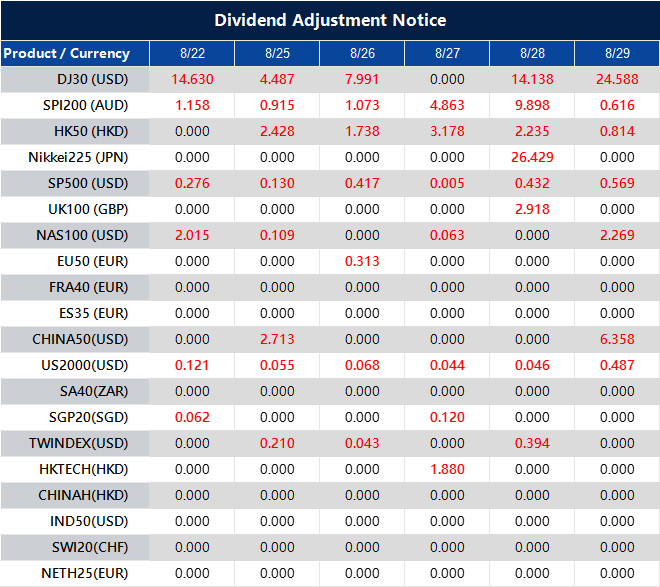The NASDAQ index fell yesterday, dropping more than 400 points during the session. This drop took the index below its 200-hour moving average, a level not breached since August 1. Back then, the NASDAQ briefly dipped below this average but quickly bounced back, reaching an all-time high of 21803.75 on August 13.
Yesterday, the index tested the 200-hour moving average at 21140.04 but closed slightly higher at 21172.86. Currently, futures indicate an opening drop of 87.32 points, which may push the index back below the 200-hour moving average, likely benefiting sellers. The immediate downside target is set at 20864.09, the 38.2% retracement from the low on June 23.
Market Economic Indicators
Later today, the S&P Global Manufacturing PMI is expected to be 49.5, down from last month’s 49.8. The services PMI is projected at 54.2, a decrease from 55.7. At 10 AM ET, US existing home sales for July are forecasted at 3.92 million, slightly lower than the previous 3.93 million. Additionally, the US leading index for July is expected to drop by 0.1%, a shift from the prior 0.3% decline.
US stocks are likely to open weakly, with a particular focus on the NASDAQ as it looks to start below its 200-hour moving average. This level has been important for buying activity, and a sustained breach could indicate a change in short-term market control. Yesterday already saw a significant drop of over 400 points, testing this key support.
This technical breakdown coincides with July’s CPI report, which showed core inflation steady at 2.8%, complicating prospects for interest rate cuts. Fed officials have indicated they will keep interest rates at 5.0% through the end of the year, creating challenges for growth-oriented tech stocks. The market is adapting to the reality that borrowing costs will stay high longer than expected.
Looking back, we saw a similar dip below this moving average on August 1, but buyers quickly entered the market, driving the index to a new high of 21803.75 just last week on August 13. However, yesterday’s decline felt stronger, and today’s pre-market futures suggest that sellers still have momentum. This pattern resembles the volatile conditions we faced in late 2023 due to rate uncertainty.
Derivative Trading Strategies
For derivative traders, this situation may be a signal to consider defensive strategies. The VIX, which stayed near 13 for most of July, has risen to 17.5 this week. This increase makes option premiums more appealing for sellers but also indicates growing fear. Buying near-term put options on the QQQ, perhaps with September expirations, may provide protection against further declines toward the next major support level.
The key downside target for the NASDAQ is at the 38.2% retracement level of 20864.09. Yesterday’s low was very close to this mark, suggesting it is on the radar for institutional sellers. A clear break of the 200-hour moving average today would likely lead to testing the 20864 level in the upcoming sessions.
However, given the sharp rebound after the dip on August 1, we need to be cautious of a “head fake.” If the market stabilizes and reclaims the 200-hour average, it could trap short-sellers and create a bear trap. In such a case, strategies that profit from volatility without a clear direction, like straddles or strangles, might be more effective.
Attention will be on the S&P Global PMI estimates and existing home sales data released later this morning. Any indication of a sharper-than-expected economic slowdown could confirm bearish sentiments and lead to further declines. Conversely, stronger data might encourage buyers to defend these key technical levels once more.
Create your live VT Markets account and start trading now.
here to set up a live account on VT Markets now





